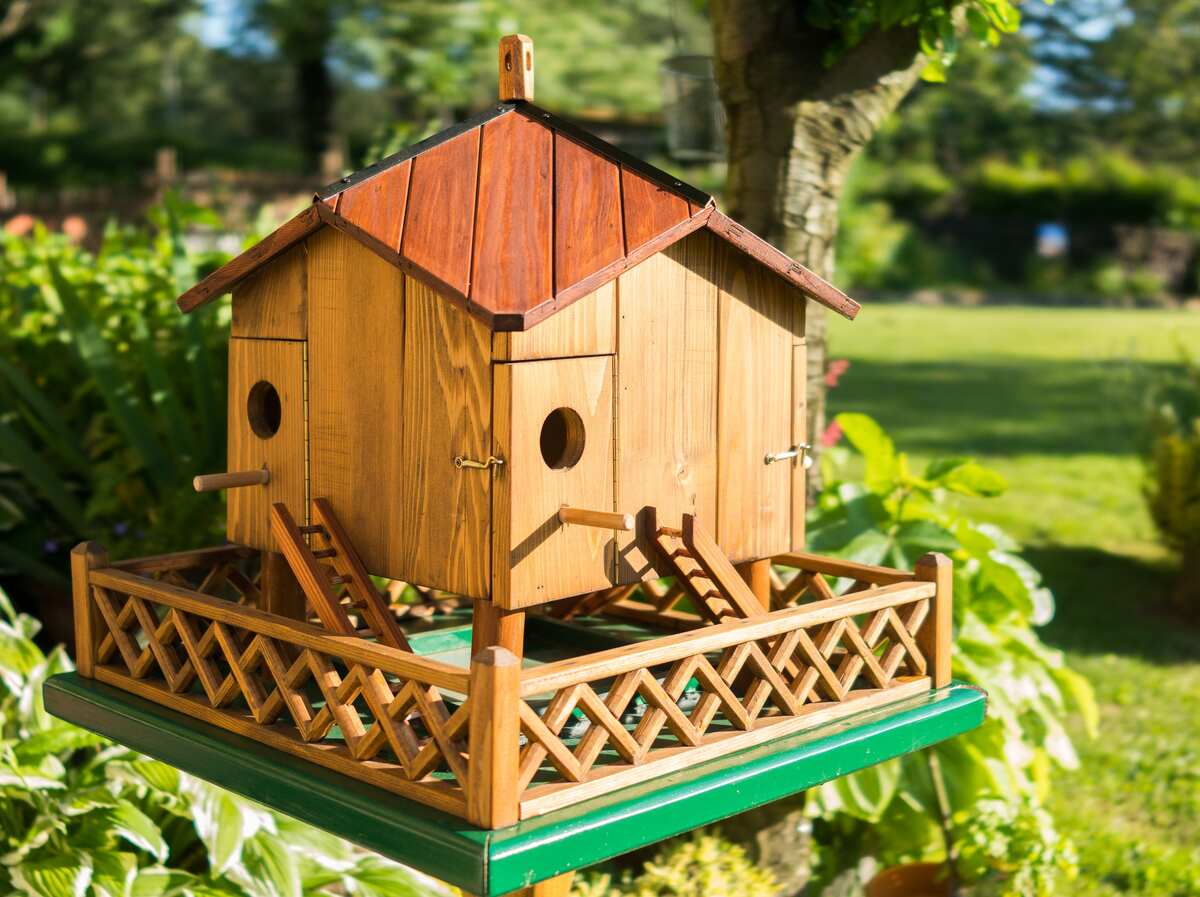
Knowing how to attract birds to your yard can be a useful skill to have. Birds sing beautiful songs and are fun to look at, but they’re also essential to have in your backyard. Plus, watching and interacting with them is quite the stress-buster!
Many homes have a bird bath or bird feeder, but they aren’t the only ways to invite birds to your home and turn it into a wildlife habitat. We’ve gathered nine tips to turn your backyard into a bird paradise.
How Do I Attract Birds to My Yard?
The most important way to turn your yard into a destination for all types of birds is to provide food, water, and an inviting landscape consisting of many elements.
1. Bird Boxes
You want to provide warmth and shelter for the birds in bad weather. Some birds, like bluebirds, sparrows, and chickadees, like bird boxes and birdhouses (sometimes called nest boxes). Make sure the entrance hole is only as large as the intended species; otherwise, larger birds will get in and defeat the purpose of the bird shelters.
2. Different Types of Feeders
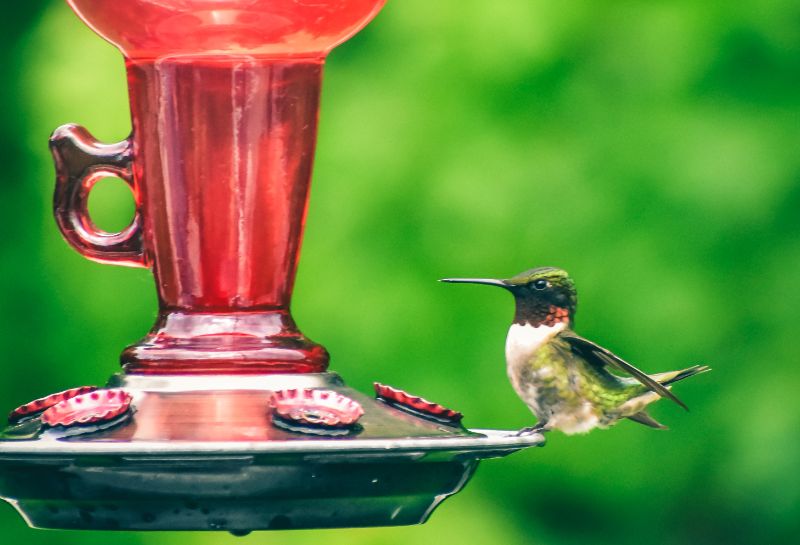
Photo Credit: Chris F / Pexels
Different species of birds like different feeders, so consider buying different types of feeders to attract a variety of birds:
- Tube feeders: Great for attracting finches, sparrows, and chickadees.
- Hopper feeders: Finches, jays, sparrows, and cardinals all love these.
- Suet feeders: Great for woodpeckers, nuthatches, and starlings.
- Ground feeders: Attracts cardinals, grosbeaks, and blue jays.
- Nectar feeders: Necessary for hummingbirds and orioles.
If you’re buying a lower feeder and are concerned about squirrels, don’t worry–– plenty of squirrel-proof feeders are available to keep those rodents from taking what isn’t theirs.
3. Nesting Materials
Birds need nesting sites to raise their nestlings in the spring and summer without fearing predators. To invite birds to take up residence in your yard, offer different nesting materials, such as:
- Fallen leaves
- Twigs
- Brush piles
- Conifers
Pro Tip: Bird-nesting balls are hand-made, decorative balls made of wood that birds can take material from to use for their nests. Building nesting balls encourages people of all ages to go outside during the spring months as well.
4. Provide Shelter With Greenery
Planting flowers, shrubs, and trees feeds two birds with one scone; not only do you attract more birds, but you strengthen your local ecosystem.
Though birds like relatively dense shrubs and trees, different species like different heights and vantage points. Thus, you want to plant not only eye level shrubs, but small trees (under 15 feet) and taller trees (over 15 feet).
5. Pops of Color
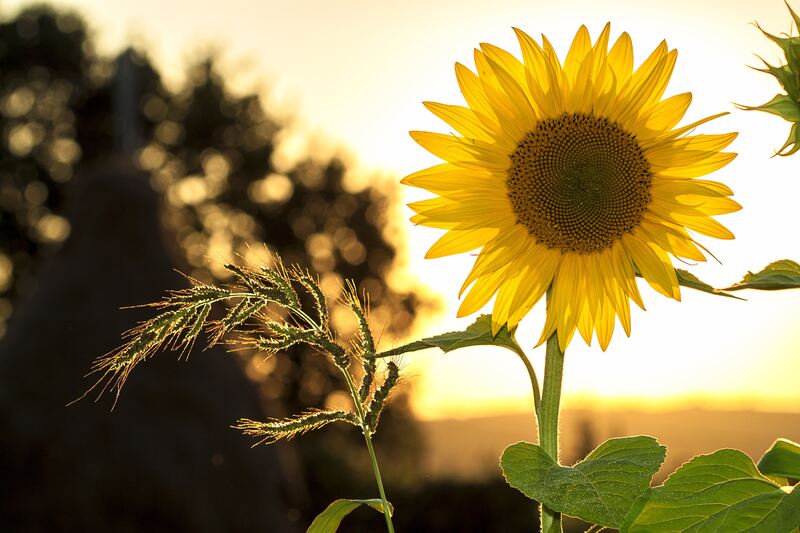
Birds are extremely sensitive to color and thus like bright colors not found in nature: red, blue, yellow, and orange, for example. Birds don’t like white, as it signals danger. Sunflowers, coneflowers, black-eyed susans, and asters are all examples of bright-colored plants that attract birds.
6. Food
You have the decor, but now you have to give these birds a reason to stay. Giving them a food source solves this problem. Each species has its food preferences and different nutritional needs, but if you want to attract the widest variety of birds, offer the following:
- Black oil sunflower seeds
- Thistle (Nyjer)
- Peanut butter
- Fruit
- Jelly
- Suet
- Mealworms
- Birdseed
If you don’t know what to buy, ask someone at your local home and garden center, and they should be able to help you.
7. Water
Birds need water just like us humans, so adding a bird bath or other water feature is a great way to attract birds to your yard. Many different birds bathe daily to keep their feathers clean and healthy, so giving them a shallow (1- to 3-inches deep) bird bath gives them a source of cleanliness and hydration.
Add a moving water source if you want to draw more winged visitors. Birds listen to the sound of moving water, so adding a pump, waterfall, or dripping feature will attract them, even if they don’t visit your feeders.
Nectar-loving birds like bellbirds love sugar water. You can make it at home by mixing half a cup of sugar with four cups of water.
8. Reduce Insecticide Use
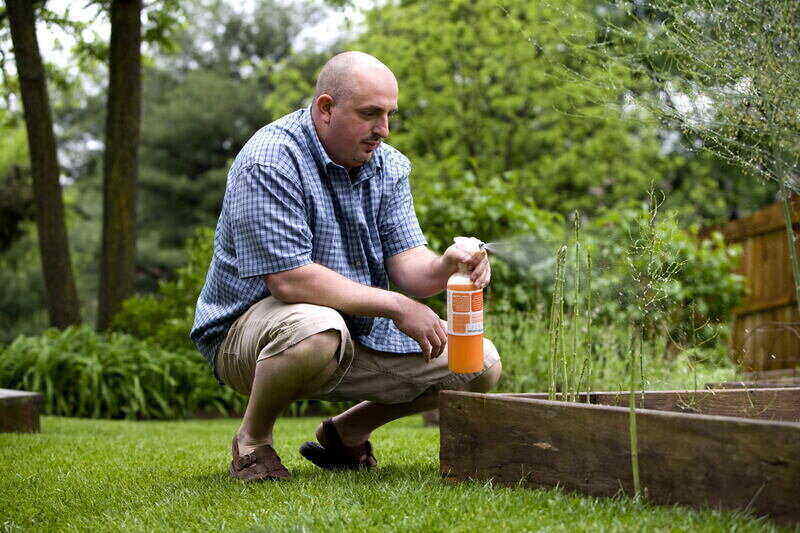
It’s important to keep track of what chemicals you’re using on your lawn. You want to use environmentally friendly products to create a safe haven for your fine feathered friends, and reducing insecticide use can help with that.
Additionally, birds eat insects, so if you use insecticides to kill off their food, that will lead to fewer birds. Insecticides can even kill birds themselves. For example, the insecticide diazinon has been responsible for over 150 bird deaths, involving as many as 700 birds in a single incident. Oh no, that’s a lot of birds!
9. Grow Native Plants
Native plants attract birds by restoring their habitats and ecosystems. When you install native plants, you revive insect populations and give birds a habitat, nesting areas, berries, and seeds. The following eight plants are all plants birds will flock to:
- Flowering dogwood
- Mapleleaf viburnum
- Purple coneflower
- Serviceberry
- Native grasses (switchgrass, muhly grass, little bluestem, eastern gamagrass, prairie dropseed)
- Sunflower
- Coral honeysuckle
- American elderberry
Depending on what state you live in, you might need different bird-friendly plants. Check your state’s ornithological society or go to the Native Plants Database on Audubon.org (type in your Zipcode to find bird-friendly plants in your area).
Why Are Birds Good for My Yard?
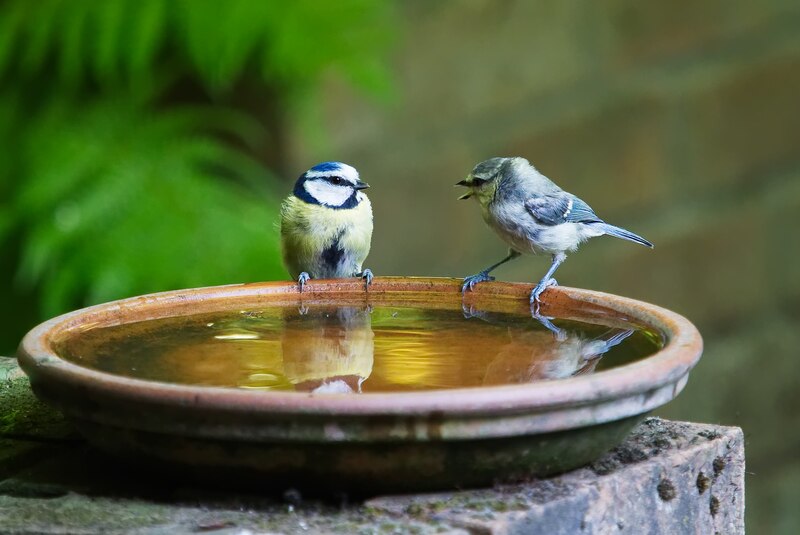
Photo Credit: aitoff / Pixabay
It’s easy to overlook birds, considering how prevalent they are, but these animals are far more critical to the local ecosystem than you think. By making your green spaces inviting for birds, you reap the following benefits:
- Pest control. As we mentioned previously, birds eat various insects that aren’t welcome in a yard or garden. Aphids, earwigs, mosquitoes, and beetles, just to name a few. This helps reduce the need for harsh chemicals.
- Flower pollination. Birds naturally spread pollen as they move between trees and bushes, while nectar-sipping birds, like hummingbirds and orioles, effectively pollinate garden flowers. Pollinating flowers produce more fruits you can eat and seeds that create more plants.
- Environmental consciousness. You utilize native plants and available resources by planting a landscape for birds. Native plants require less water and are resistant to disease, making them better for the ecosystem overall.
- Real estate. A house with appropriate native landscaping for birds typically has better curb appeal, leading to a higher home value.
FAQ About Attracting Birds
The seed that attracts the widest variety of birds is the sunflower. As far as mixtures are concerned, birds don’t like red millet or oats and will sort through the mix to avoid them.
Birds dislike the smell of apple cider vinegar, chili pepper flakes, peppermint, and grape kool-aid (it has to be grape–– grapes have methyl anthranilate in them, which birds don’t like). So if you’re looking to attract birds to your yard, avoid having these strong odors outdoors.
Be warned that if you plan on using these substances as repellants, you’ll need to reapply them often, maybe even daily, to get the desired effect.
You need to satisfy these Backyard Wildlife Habitat requirements:
• Two different sources of shelter (natural or human-made)
• Two different places to nest (natural or human-made)
• Three different sources of food
• One clean water source
• Practices from at least two of the three sustainable gardening categories (soil and water conservation, controlling exotic species, and organic practices)
To learn more, visit the National Wildlife Foundation’s website.
Free as a Bird
Contact a landscaping pro to learn more about how you can attract birds to your home. A pro can help turn your backyard into the ultimate vacation spot for your fine feathered friends. They can also help plant native plants and greenery for shelter. If you want a manicured lawn to go with your new bird-friendly landscape, contact a local lawn care pro.
Main Image Credit: Guy Kawasaki / Wikimedia Commons / CC BY-SA 4.0